The Quick Reload Perk - OTs-124 and OTs-128 Machine Guns

This fascinating series of experimental machine guns was first publicly revealed in 2018. They were developed by TsKIB SOO, the Central Design and Research Bureau of Sporting and Hunting Arms, a Tula KBP Instrument Design Bureau subsidiary. CEO Alexey Sorokin led the project, which included a design team focused on creating a series of weapons based on the OTs-129/MTs-566.
The result was the OTs-124, chambered in the experimental 6.7×51mm cartridge. Second is the OTs-128 machine gun, chambered for the 7.62×51mm NATO. These were developed for the Alatau research and development program and patented in 2022. This last part may indicate we may see more of this weapon in the future.
The experimental machine gun OTs-124 was designed to utilize a new experimental cartridge, the 6.7x51, based on the 7.62x51 NATO cartridge. This new cartridge is intended for an effective range of 700-800 meters and features an armor-piercing carbide core. Reports indicate that the development of the 6.7x51 cartridge has stalled, possibly due to a lack of funding or changes in requirements.
The 6.7x51mm cartridge could have been a closer rival to the U.S. Next Generation Squad Weapon (NGSW) 6.8x51 cartridge. It could close the gap between the U.S. and Russia as the U.S. explores new trends in military small arms ammunition designed for enhanced projectile energy and range. The 6.7×51mm cartridge is likely to share similarities with the US NGSW 6.8×51 mm cartridge, as both were developed under similar programs. They have nearly identical specifications, and both operate at higher pressures with increased range and kinetic energy. Soviet and Russian R&D programs have had the opportunity multiple times to develop solutions to better compete with or surpass the US and Western cartridge and small arms design.
The Gun
The OTs-124 and OTs-128 machine guns are designed to enhance a machine gun's rate of fire and accuracy, according to the patent. The OTs-124 was also tested with experimental 6.7x51 ammunition. Unlike most machine guns, the OTs-124 and OTs-128 feature a monolithic receiver and do not have a feed tray cover. This design choice increases the rigidity of the receiver and allows for a greater range of optics without needing to lift a feed tray cover during reloads. From the traditional machine gun layout, the OTs-124/128 operating system was rotated 180 degrees, putting the feeding system on the bottom of the weapon, more in line with an assault rifle configuration. This approach was chosen to speed up reloads with a unique feeding solution.
The distinctive feature of these models is their feeding system. They utilize an ammunition box as the magazine, eliminating the need to run a belt through the feed mechanism. This can significantly reduce the weapon's downtime during reloads. To achieve this, the ammunition box incorporates part of the feed mechanism, including the feed ramp, feed paws, and cartridge guides, with the first cartridge presented on the feed ramp. This concept turns the ammunition box into a large box magazine, where the magazine is inserted, and the weapon is racked to chamber a cartridge. This design enables one-handed reloading, similar to a US invention filed in 1981. The patent number is US 4389918A for an ammunition belt feed magazine system, which the US Department of the Army holds.
The machine guns operate using a gas-operated system with a short-stroke gas piston. Locking is accomplished through a multi-lug rotating bolt mechanism. These weapons are fully automatic and include safety and fire functions. However, there is no publicly available information regarding their specifications, such as rate of fire or weight.
The belt, similar to the RPD belt, has a non-disintegrating design and features a starter tab. It incorporates a push-through system, with the brass facing upwards instead of towards the grass.
Depending on the iterations, some of the available prototypes shown utilize PKM parts using available parts, reducing prototyping costs and speeding up product development. Some examples show PKM charging handle assembly and safety. The receiver is constructed with aluminum sub-assemblies screwed together with internal parts and covers riveted to the receiver.
Thoughts
The ammunition box presents the most significant weakness in the design, similar to the PKM ammunition cans, which often endure heavy use and can sometimes be used as a monopod. Since part of the feed mechanism relies on the ammunition can, damage and misalignment during feeding can result in operational issues.
A viable solution would be to create a single-use polymer ammunition box with a riveted stamped steel feed plate assembly, similar to the M-249 disposable ammunition box. This approach could reduce costs, eliminate the problems associated with damaged ammunition cans, and avoid introducing new issues. Additionally, the absence of a quick-change barrel undermines any improvements in the feed system that will speed up reload times.
Last observation: since part of the feed mechanism is connected to the ammunition box, the weapon cannot operate without the ammunition box mounted on it.
Conclusion
The concept of weapon systems shows significant potential, and it would be beneficial to explore any further advancements related to the weapon or interest in the 6.7x51 cartridge. The OTs-124/128 could enhance ballistic performance and serve as proof of concepts for future developments. Its unique feed system holds considerable promise, and I look forward to seeing it further developed. This light assault machine gun can significantly reduce reload times for belt-fed machine guns, allowing them to return to the fight quickly and providing essential suppressive fire to enhance the unit's effectiveness.
Sources:

Lynndon Schooler is an open-source weapons intelligence professional with a background as an infantryman in the US Army. His experience includes working as a gunsmith and production manager in firearm manufacturing, as well as serving as an armorer, consultant, and instructor in nonstandard weapons. His articles have been published in Small Arms Review and the Small Arms Defence Journal. https://www.instagram.com/lynndons
More by Lynndon Schooler
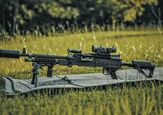

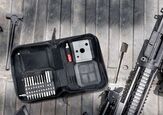













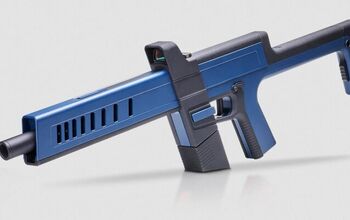


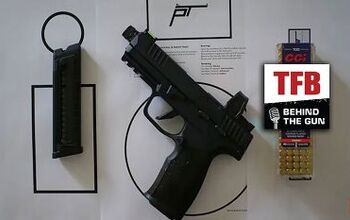



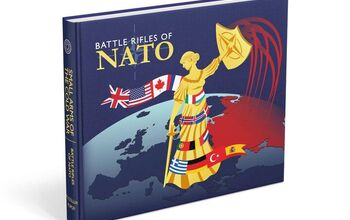

![[SHOT 2025] ZEV Technologies Folding Defensive Platform (FDP)](https://cdn-fastly.thefirearmblog.com/media/2025/01/24/19471/shot-2025-zev-technologies-folding-defensive-platform-fdp.jpg?size=350x220)






![[SHOT 2025] Mountain Billy Gun Lab GOAT-15](https://cdn-fastly.thefirearmblog.com/media/2025/01/30/00411/shot-2025-mountain-billy-gun-lab-goat-15.jpg?size=350x220)
Comments
Join the conversation
Really ingenious architecture ; thank you for sharing.
I would rather own an Israeli Negev.